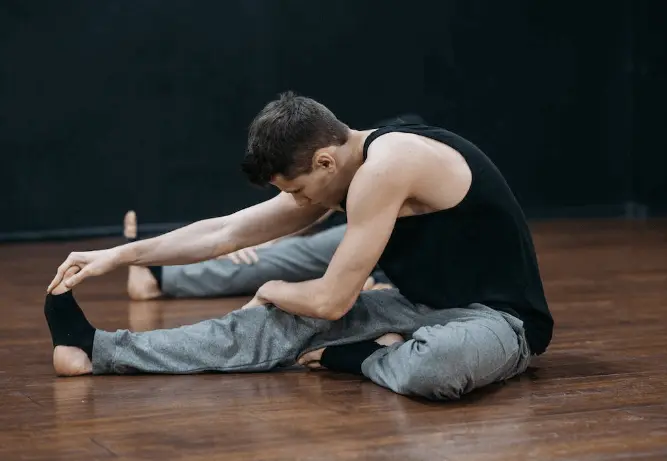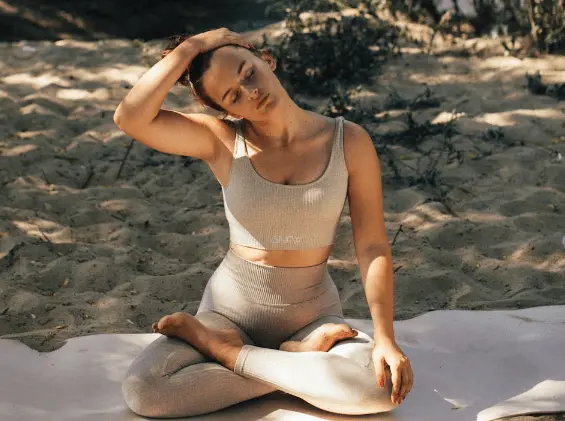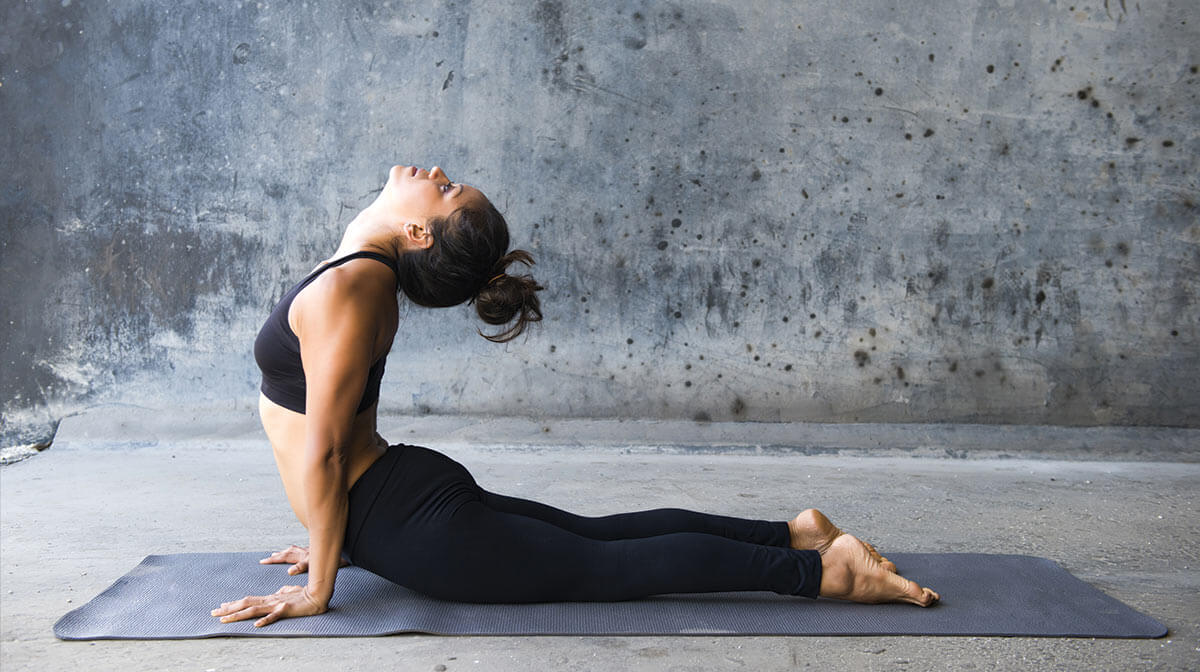Athletes spend extra time doing stretching exercises apart from their regular training. Stretching for warming up and cooling down is essential in keeping their muscles in good health.
Incorporating stretching exercises into your daily routine will have numerous advantages even if you are not an athlete. A regular stretching routine can help you improve your flexibility and de-stress as well. Stretching is a great way to avoid injuries.
You need not worry if you are a beginner. It is never too late to start stretching. We cover some of the most simple stretching exercises with which you can build a stretching routine focusing on all major muscles. Moreover, these basic stretches are easy to start with and are not at all complicated.
Contemplating whether to include these exercises into your routine? Read on to know the benefits of stretching and you will automatically be ready for a full-body stretching everyday routine.
Advantages of stretching
Stretching regularly can be beneficial for physical as well as mental health. Below are the chief benefits of stretching exercises.

Lowers the risk of injury: Stretching regularly can prevent the risk of injuries to muscles and joints alike.
Increases range of motion: As we already know, range of motion gradually subsides with age. This age-related loss of mobility can be slowed down by stretching.
Based on a study conducted, it was seen that young adults had an improvement in their range of motion after starting their stretching routine.
Reduce pain: Based on a study conducted on research students, strengthening and stretching routine has significantly decreased pain which was because of bad posture.
Better athletic performance: Stretching exercises before exercising extensively can improve your overall athletic performance. It is said to do so by reducing the joint restrictions.
Relaxation: Stretching while focusing on breathing (deep and slow breathing) helps relax your body and mind alike.
Improved circulation: A study conducted on 24 adults backs the circulatory effect of stretching. Stretching is known to improve circulation and functions of the blood vessels.
When should you stretch
There are various types of stretching. Some are more beneficial when done at a certain time. The two most common types are:
Dynamic stretching: This stretching is ideally done before a workout as it incorporates the active movement of muscles or joints through its full potential. This is necessary for warming up your muscles before a vigorous workout routine.
Static stretching: This kind of stretching is ideally done after a workout. This involves holding stretches for at least 15 seconds or more without moving. This helps loosen up the muscles and relax them.
Including stretching in your warm-up routine before training or a physical activity activates your muscles and prepares them. Moreover, warmed-up muscles perform better than cool muscles. We suggest that you opt for dynamic stretches before exercising.
On the other hand, static stretches play an important part post-workout as they may reduce soreness of your muscles. Static stretching before sleeping can improve the feeling of relaxation. After a period of inactivity, stretching improves the inflow of blood to your muscles which is important in reducing their stiffness.
Stretching routine
Are you a beginner starting a stretching routine? We suggest you add a minimum of one stretch involving every major muscle group. Sometimes, you may experience stiffness of certain muscles like the neck, legs, hips and upper back areas.
To target specific areas, you can perform stretches multiple times for that specific muscle group and hold the stretch for longer. In this article, you will learn about full-body routines and the ways by which you can incorporate these stretching exercises into your everyday life.
Here are some of the best stretching exercises for beginners.
Calf stretch
Stand straight with your hands against a wall. Now, step back with one foot. Bend the front knees slightly while keeping the back leg straight. Bend the front knee until you feel a slight gentle stretch in the calf muscle of the back leg.
Make sure to keep both feet flat on the floor. Hold it for 30 seconds and repeat on the other side.
Muscles involved: calves
When can you perform: when you feel stiffness in your calves or after running
Glutes stretch
Lie down on your back and stretch your legs up. Now, bend your knees at a 90-degree angle. Cross the right ankle on the left knee. Pull the left leg towards your face until you sense a stretch in the opposite hip. Hold for about 30 seconds and repeat the same on the other side.
Muscles involved: glutes and hips
When can you perform: bed-time or after running
Hamstring stretch
Sit on a smooth surface with one leg spread out in front of you. Place the foot of the opposite leg against the inner thigh of the straight leg. Lean forward to reach your toes while keeping your back straight. When you feel a gentle stretch, hold it for 30 seconds and repeat the same on the opposite side.

Muscles involved: lower back, hamstrings
When can you perform: bedtime, after workouts and when hamstrings are stiff.
Upper back stretch
Sit on a chair keeping your back straight. Keep your core engaged and ankles in line with your knees. Now, twist your body to the left while pushing against the left side of the chair with your right hand. Hold for 30 seconds and repeat on the opposite side.
Muscles involved: back, neck and shoulders
When can you perform: when your back feels stiff or even after prolonged hours of sitting
Leg swings
Stand keeping your legs shoulder-width apart. While balancing on one leg, swing the other leg in a back-and-forth motion in front of your body to wherever it feels comfortable. Perform 20 repetitions and repeat on the other leg.
Muscles involved: inner thighs, hips and glutes
When can you perform: before workouts or training
Standing chest stretch
Place your arms on a door frame. Lean forward until you sense a chest through the chest. Hold for about 30 seconds and repeat it.
Muscles involved: chest, shoulders and biceps
When can you perform: after long hours of sitting
Standing quadriceps stretch
Stand upright and hold your right foot to your butt with your right hand. Hold the position for 30 seconds. Now, repeat on the opposite side. Make sure to keep your knee facing the ground and tuck your pelvis under your hips.
Muscles involved: quadriceps
When can you perform: when thighs feel tight or after running
Neck circles
While sitting, drop your chin towards your chest. Tilt your head to the right until you feel a stretch along the left of your neck. Hold for about 30 seconds or more. Now, repeat on the other side.
Muscles involved: neck
When can you perform: whenever your neck feels tight?

High knees
Stand straight with your legs shoulder-width apart. Raise one knee and bring it back to the ground. Now, raise the other knee immediately and continue the process. This stretching exercise improves blood circulation to the lower limbs.
Muscles involved: knees, glutes and hips
When can you perform: before workouts
Butterfly stretch
For this exercise, sit on the floor with your knees bent sideways and your soles touching each other. Now, grab your feet or at your ankles and lean forward. Make sure to engage your abs while pressing your knees to the ground. Hold this position for about 30 seconds.
Muscles involved: back, hips, thighs and glutes
When can you perform: after workouts and running.
Triceps stretch
Stand straight with feet hip-width apart. Raise your arms above your head and bend one of the elbows such that it touches the top of your back. Hold that elbow with the other hand and gently pull it towards your head. Repeat on the opposite side.
Muscles involved: back of the upper arm
When can you perform: after shoulder workouts
Shoulder rolls
Stand straight with your feet slightly wider than your hips. Now, roll both the shoulders up and back down. This is one rep. Perform 10 such reps.
Muscles involved: shoulders, chest and upper back
When can you perform: warmup before workouts
Conclusion
As we have already mentioned, it is never too late to start a stretching routine. Same as any new routine, you may begin with a small goal and build up slowly. To begin with, you can start a stretching routine at bedtime or as a wake-up routine.
The stretching exercises we mentioned above are a great start. However, you may go for other stretching exercises as well. You can refer to our article “exercises to become flexible” for many such exercises.
You might wonder how often you should exercise as a beginner. 2 to 4 days a week is ideal to notice a significant difference in your flexibility. If you wish to do these exercises every day, there is no harm in doing so.
When you are doing a full-body stretching routine, we suggest you choose one stretch for each major muscle group at the least. Make sure to not stretch beyond the capability of your body.
You must stop if you experience any sort of pain. If you have an injury, it is recommended to follow a physician or a physical therapist’s instructions before you start a stretching routine.
